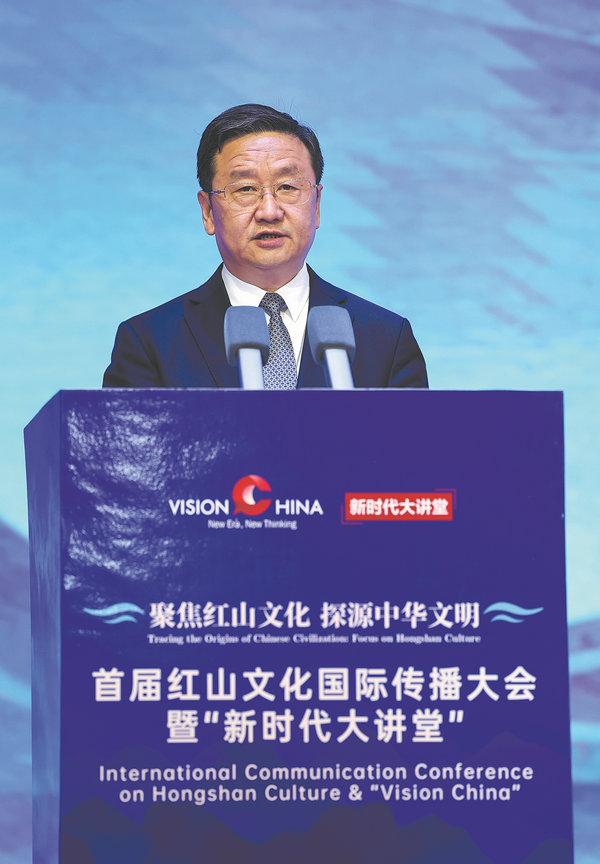Where Chinese dragons first took flight


Dating back around 5,000 to 5,800 years, the Niuheliang site in Chaoyang, Liaoning province, marks a representative late-Neolithic relics site of Hongshan culture in northeastern China.
"Liaoning has nurtured a splendid historical heritage, rich Red (revolution-themed) culture, robust industrial traditions and vibrant ethnic cultures," Wang Xinwei, governor of Liaoning province, said in his speech at the International Communication Conference on Hongshan Culture and Vision China event in Chaoyang on Saturday.
"Together, they compose a splendid chapter in Chinese civilization. The Niuheliang site shines like a brilliant star in the sky."
He said that the meticulously arranged altar, the goddess temple and rubble mound tombs at the site demonstrate an early practice of polity through rituals, where jade artifacts indicated social hierarchies.
He said the symbolism embedded in its artifacts directly influenced the rituals of the Shang Dynasty (c. 16th century-11th century BC) and Zhou Dynasty (c. 11th century-256 BC), laying a cornerstone of Chinese civilization's ritualism.
"The Niuheliang site gave birth to the genes of China's dragon motifs and jade culture. The 'pig dragons' (known for their chubby, pig-headed shape and raised ears) unearthed at the site, demonstrated the evolution of animal images into the embryonic forms of dragon motifs."
Chinese people refer to themselves as "descendants of the dragon". "Gentlemen compare virtue to jade" is an important concept in traditional Confucian thought. Wang believed the "pig dragons" unearthed from the site are the spiritual wellspring of such ideas.
"The architectural layouts, exquisite jade and painted pottery items unearthed at the Niuheliang site showcase both the distinctive characteristics of Hongshan culture and integrated elements of Central China Plains civilizations. They vividly demonstrate that China's over 5,000-year civilization with its diverse elements formed a unity," he said.
According to the Liaoning Provincial Department of Culture and Tourism, the province received about 652 million visits in 2024, a year-on-year increase of over 28 percent. The Niuheliang site museum and national archaeological site park also stand as pivotal tourist attractions in Chaoyang.
According to Wang, the province will remain committed to building high-quality demonstration zones for integrated development of culture, sports and tourism, shoulder the cultural responsibilities in the new era with greater dedication and advance the study of Hongshan culture.
He expressed hope that experts and guests engage in extensive exchanges and discussions, sharing valuable insights to work together in preserving Hongshan culture.
"Together, we will ensure this precious heritage radiates new splendor in the new era," he said.





































